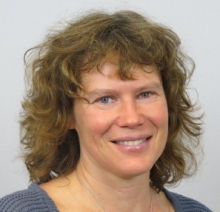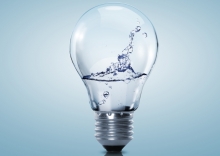Issue:
What do leading water utilities and providers of services and technologies recommend in order to steer a path through the maze of digital options and opportunities? Keith Hayward heard some suggestions.

1: Destination data
‘Of course water is essential to life, but I would like it that we also start thinking about data becoming an extremely valuable resource for utilities,’ says Naji Najjar, Global Water Segment Sales Leader at IT giant IBM. In fact, he sees that data will be of such fundamental importance to water utilities that they need to embrace this as part of their identities. ‘There is a need for water utilities to drive towards what I consider is going to become like a digital utility,’ he says. ‘A digital utility has a completely different set of characteristics to the current utilities that exist now. Of course the infrastructure is going to be there, operational skills are going to be there, [but] there is a need for a different set of skills.’
2: A search for truth
Water utilities already generate data, producing it in different amounts and in differing qualities within the various activities across their organisation. Many have also invested in sometimes expensive IT infrastructure. But IBM’s Naji Najjar notes that water utility executives generally face the same issues. ‘They don’t have a single view of truth in their organisation. There are black spots. There are different silos within their organisation,’ he says. ‘What we push actively is a fundamental first step to get a holistic, 360 degree view, which I call the situation awareness, taking all the data that the company has from the different systems,’ he explains. ‘This work is challenging… but it is feasible, it is being done. Some utilities have already done that.’
3: Data for decisions
But why put such an emphasis on data? ‘I think a lot of time when we discuss this data-driven, real-time, online, big data, we often lose our way in all this confusion of data analytics and all these kinds of things,’ says Pernille Ingildsen, Chief of Projects and Planning at the Kalundborg Forsyning utility in Denmark. Her point is that this is not about data for the sake of data but about achieving certain outcomes. It is about utilities making smarter decisions, and she has captured this idea using the acronym MAD in a book published with co-author Professor Gustaf Olsson. ‘We had a very simple framework that we called the MAD principle – you have to measure, you have to analyse, and you have to decide,’ she says. ‘To make smart interesting, you have to have all three components. If you just measure then you get a lot of data and its not helping anybody. If you make a lot of analysis but you do not act on it, it’s not really interesting. So you really have to close the loop all the time and decide.’
4: A dose of realism
Francisco Cubillo is Deputy Director, Development & Innovation for the highly respected Spanish utility Canal de Isabel II, which serves some 160 municipalities. ‘Always we have to rely on technology and data,’ he says. He notes a paradox in the reality that utilities face. ‘We have kind of a permanent gap between technologies and available useful data… We have technologies able to make very powerful analysis, and we have to use the current data that were not defined thinking of this technology,’ he continues.
As an example, Cubillo considers the challenges of implementing an asset management plan. Age and deterioration are key factors for preparing a plan for replacing assets such as valves. Deterioration is influenced by the biofilm growth that is affected by local factors. Also, if one aim is to address bursts, this brings in a need to think not just of the likelihood of a burst occurring but to consider also the likely impact. ‘We have the concept… but we don’t have enough data in our network to be able to make this investment [decision],’ he says. He points out that he is optimistic about the potential to exploit data, but sees it is important to understand the accuracy and certainty that can be achieved. ‘Be sure what you are able to reach – don’t create expectation that the technology or the current data are not able to provide,’ he adds.
5: The data business
The emphasis on data brings a change in the way a utility views its instrumentation. Seth Vance, Global Business Unit Director – Software at instrumentation company Hach, notes that utilities often have concerns around up-front investment needs, and also face a challenge in keeping up with the latest technologies. He mentions that Hach has a line of flowmeters for which it has begun supplying data as a service. ‘I think it helps allay some of these concerns,’ he says.
This approach works for the supplier too. ‘I also think it helps us as a business to be able to continue to invest in what we are doing. If we continue to see that revenue stream coming in, we can say, great, we are going to continue to invest in this idea,’ he says, adding: ‘It turns out to be a virtuous cycle for both the utility and the supplier.’
6: Open your eyes to the opportunities
Armed with this outlook, explore the opportunities that the data revolution is opening up. The growing business of Fathom, for example, is built on leveraging data and CEO Trevor Hill is a prominent advocate for digital opportunities. Picking up on Ingildsen’s MAD measure-analyse-decide acronym, Hill sums up metering in the US, for example, as currently at around 10% for M, and ‘basically zero on A and D’. He points also to the potential for use of IoT, pressure, temperature, and quantitative sensors in the distribution system, none of which have progressed very far either. ‘One of the things we are working on right now is using billing and time of use algorithms to modulate pressure in distribution systems, which goes immediately to power savings,’ he says, concluding: ‘I think there is tremendous opportunity there.’
Article based on comments made during the 6th World Water-Tech Innovation Summit, London, 20-22 February 2017.
Keywords:
- IBM, Hach, Fathom, utility management, smart utilities






